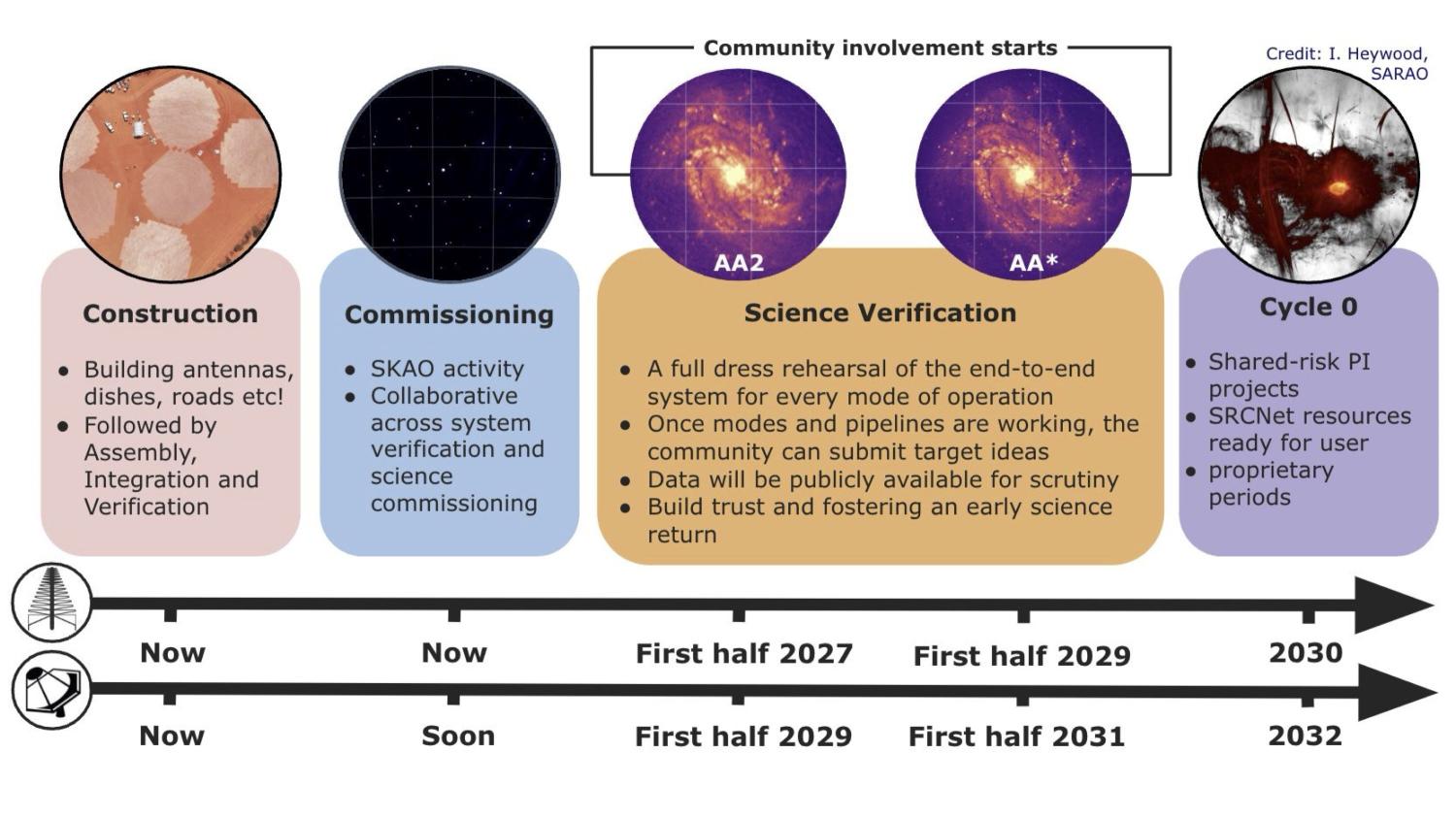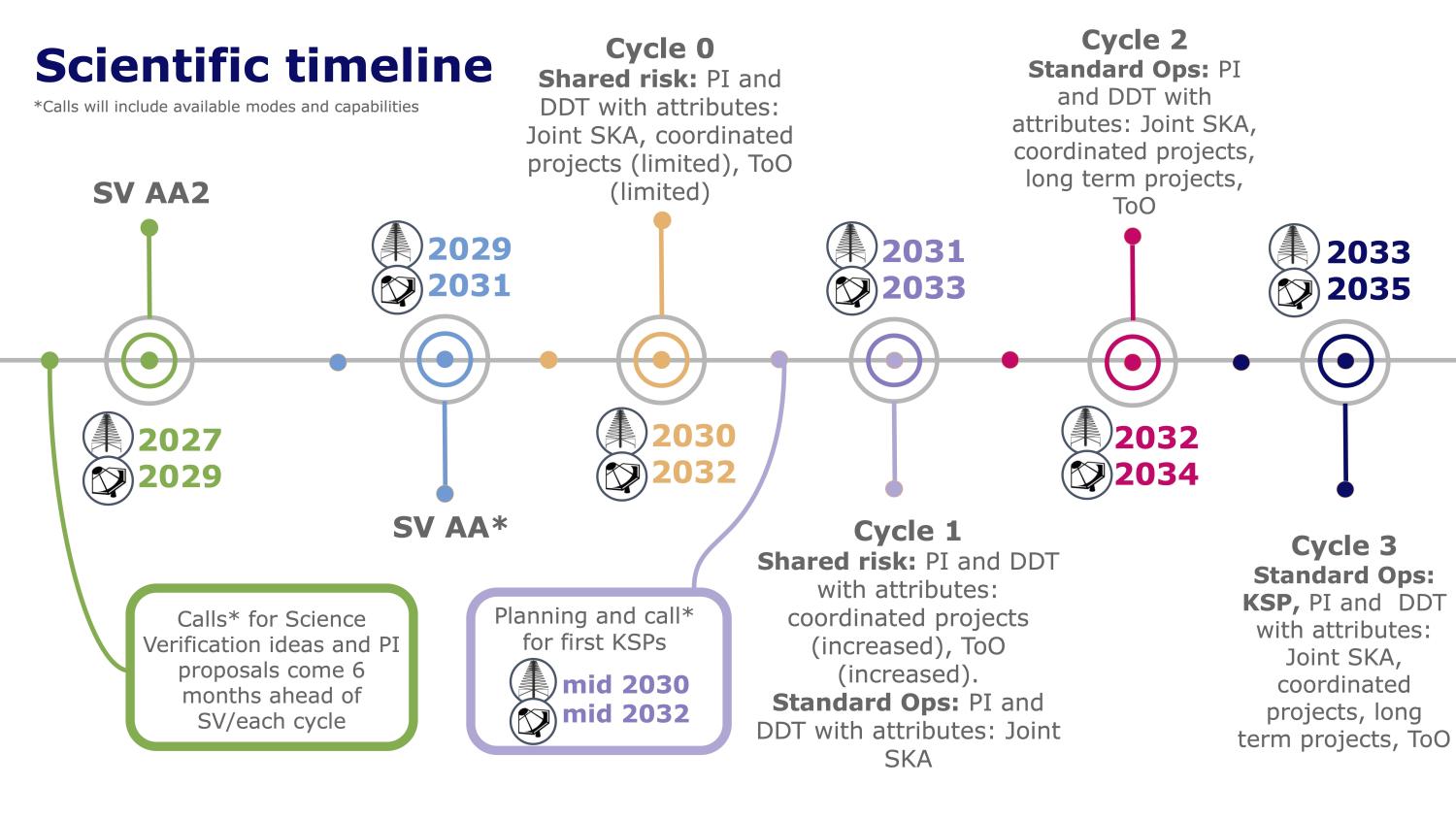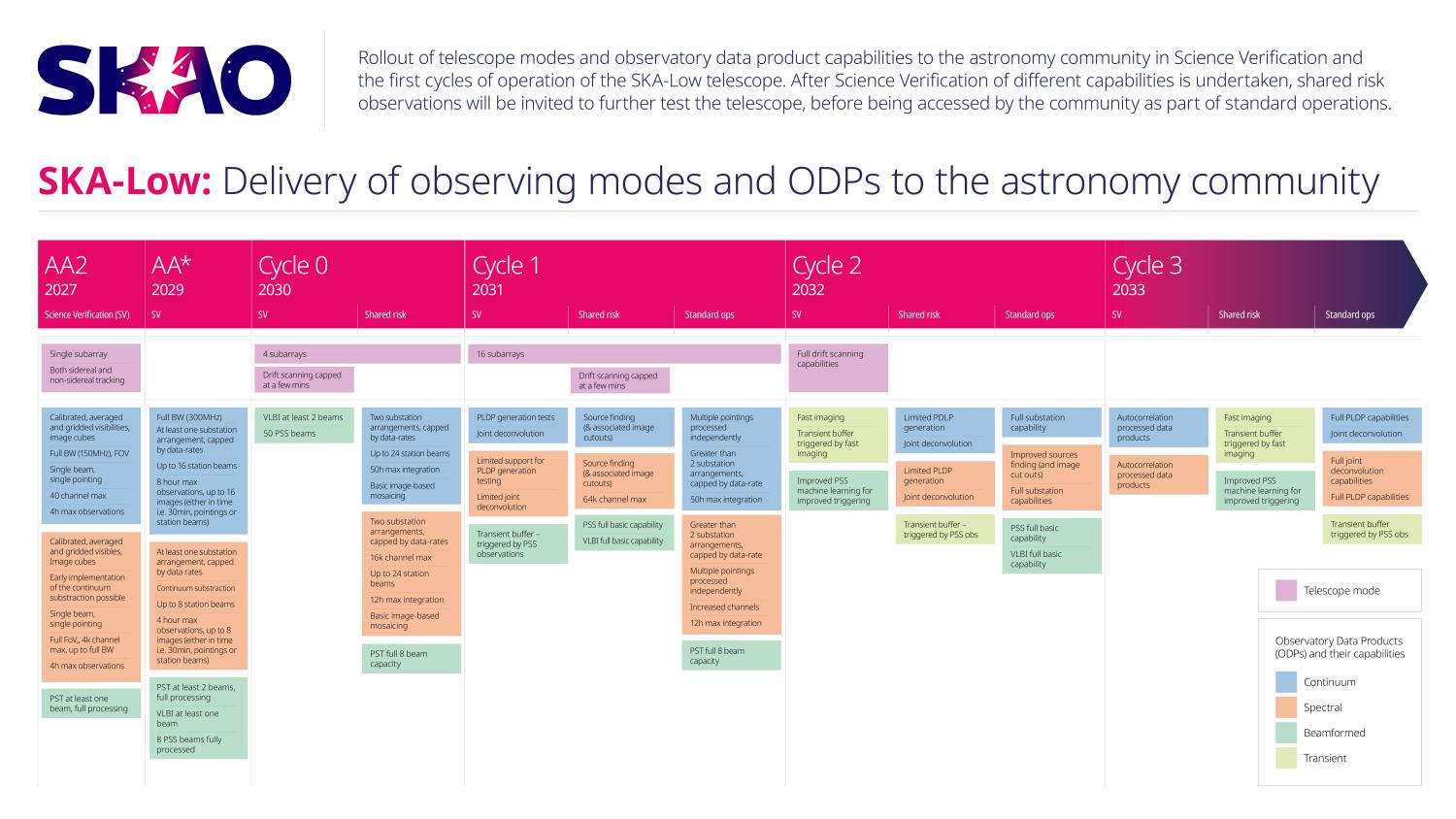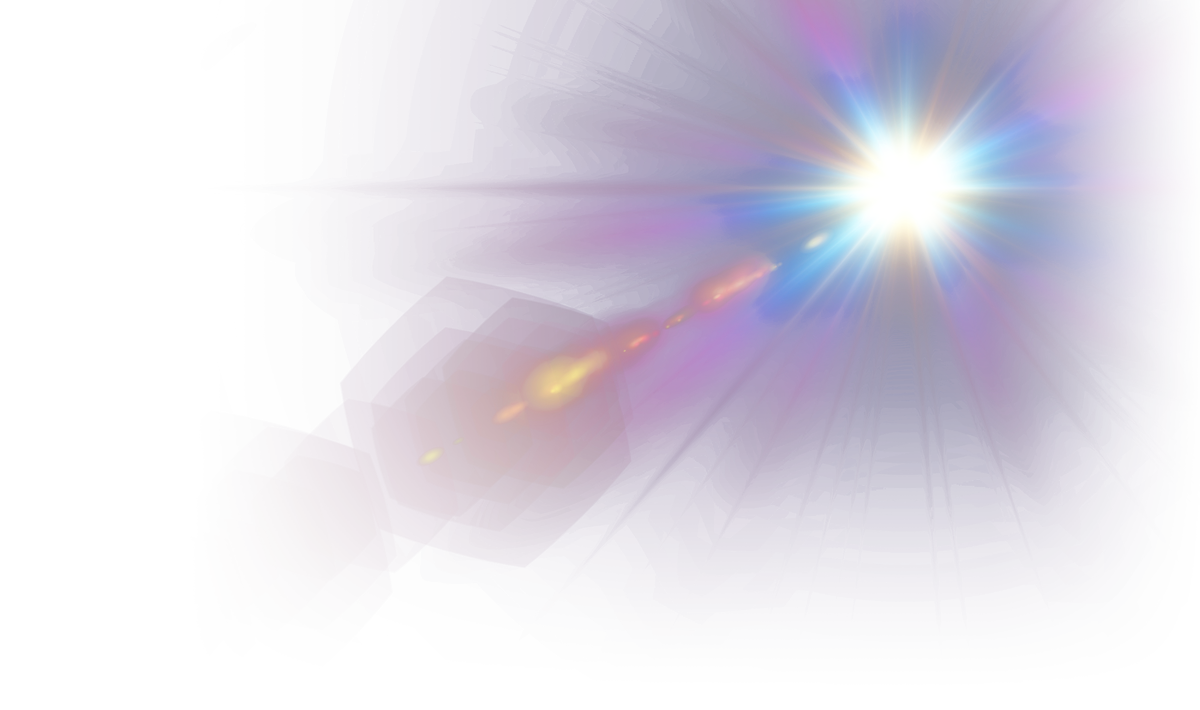Timeline to Science
This page has been posted in time with the SKAO Science meeting -- while it shows the most up-to-date information, more details will be added soon
Evolution of SKAO operational modes

Towards the end of our Array Assembly* 2 (AA2), we will mark the beginning of Science Verification (SV), which will ensure the system meets the needs of science users. SV will be the first opportunity for the community to access SKA data. Six months before SV begins, the Observatory will issue a Call^ for SV ideas. All SV data will be made publicly available and community participation during this phase will be essential for validating Observatory processes and shaping effective workflows ahead of regular operations. The SKA Regional Centres Network (SRCNet) Project delivery timeline is aiming to be ready for first users at the start of SV, with testing at appropriate scales starting in the first half of 2026.
To bridge the gap between SV and regular operations, new telescope capabilities will first be made available during a "shared risk" operational Cycle. In shared risk projects, the risk is shared between the Observatory and the project teams and should a scheduled observation be unsuccessful, the project is not guaranteed to be rescheduled. For a detailed timeline of the increasing capabilities please see the figures below for SKA-Low and SKA-Mid.
A Call for Principal Investigator (PI) proposals will come 6 months before each observing Cycle. Due to the capabilities roll-out, not all observing modes or project attributes will be available with the early calls for proposals. The first observing cycle, Cycle 0, will immediately follow AA* SV. It is anticipated that the majority PI and DDT projects will be shared risk through Cycles 0-1, and be offered as part of standard operations starting Cycle 2 and continuing as such thereafter.
Key Science Projects (KSP) are the most ambitious SKA science projects. They will typically require significantly more observing time than PI proposals and will be carried out over more than one observing cycle. Beginning KSPs requires us to have a very good understanding of the telescope performance and maturity of the data analysis pipelines. They also require significant community planning, and as such the first call for KSPs will come out much earlier than they are due to begin, to ensure that the project teams can secure the necessary resources and develop their detailed project plans. Presently, the first call for KSPs will come out 6 months ahead of Cycle 1 with the first KSP observations expected to begin with Cycle 3.
*For a full description of all Array Assembly (AA) stages, see SKA Staged Delivery Array Assemblies and Subarrays
^ All Calls, including Call for Ideas during SV & Call for Proposals, will include a complete list of available modes and capabilities.
Timeline and evolution of user community engagement

Summary of rollout of modes for the SKA






